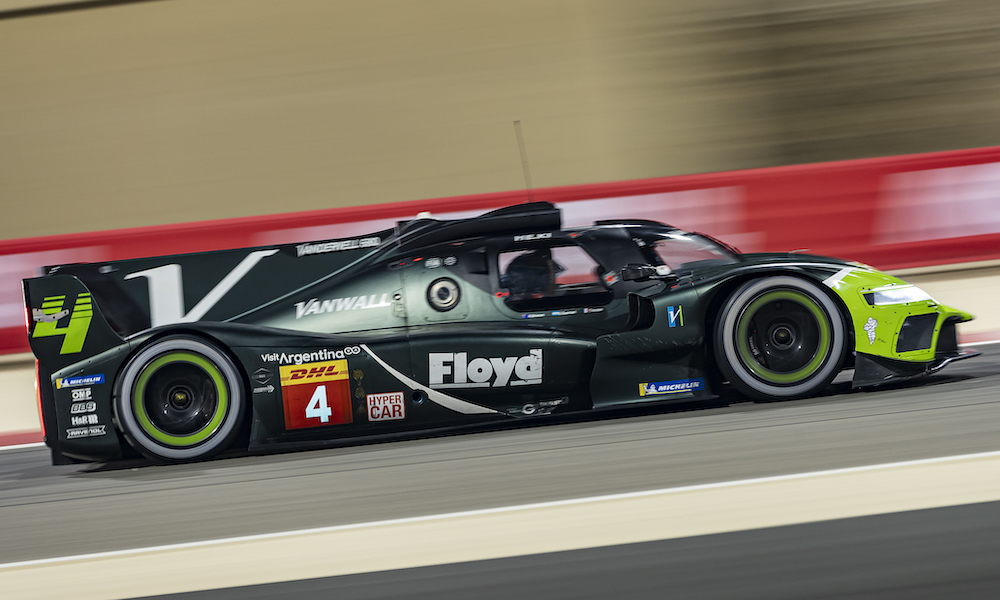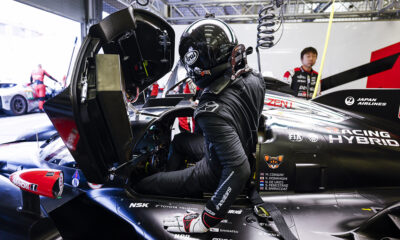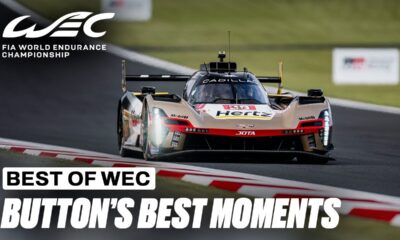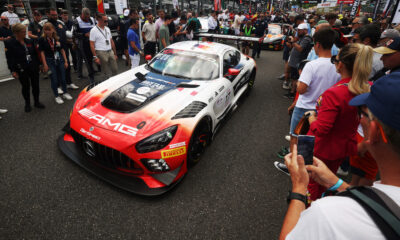Floyd Vanwall Racing Team struck a deal to use an engine from Glickenhaus supplier Pipo Moteurs in the 2024 FIA World Endurance Championship season before its entry application was rejected by the series organizers, according to team owner Colin Kolles.
The ByKolles-run outfit made its Hypercar debut this year with the Vanwall Vandervell 680, powered by a Gibson engine, but it endured a difficult campaign with a vehicle that ended up being down on power compared to others in the top class.
The 4.5-liter naturally aspirated V8 used in the Vanwall LMH car was carried over from the Gibson unit that ByKolles previously installed in its LMP1 car, the ENSO CLM P1/01.
In the Hypercar Balance of Performance, the Vanwall was given a maximum power output of 511 kW for the season-opener and 512 kW for the next three races including the 24 Hours of Le Mans. That went up to 520 kW for the last three events.
Its power deficit fluctuated depending on circuit environments and weather conditions but is understood to have been as high as 60 kW (80 hp) at some points.
Modifications to generate more power, including upgrading to a V10 layout, are known to have been considered at one stage, but ByKolles ultimately elected to switch suppliers.
It reached a deal with Pipo Moteurs at the end of October and filed an entry request to compete in the 2024 season but the Vanwall was not included on the 37-car entry list.
However, Kolles confirmed that the 3.5-liter twin-turbo V8 engine from Pipo, which appeared in the Glickenhaus 007, is due to be delivered in the next couple of weeks.
He told Sportscar365 that the engine will be a “little bit different” in terms of electronics but the main architecture will remain the same as it was in the non-hybrid Glickenhaus.
“Since [agreeing to use the Pipo engine] everybody has been working day and night,” said Kolles.
“We have had improvement not only on the engine side. With Pipo, we know about the performance of it.”
The change of engine supplier also contributed to ByKolles making the decision to pursue a new homologation for its non-hybrid LMH prototype.
“The monocoque is still going to be the same,” Kolles confirmed.
“In terms of other relevant stuff – cooling, packaging due to the new engine, suspension updates, aero updates – it was discussed with the FIA that it’s better to have a new car homologation.”
Despite ByKolles working on changes to the Vanwall for next year, it is unclear what the future holds following its rejection by the WEC selection committee, and whether the Austrian-flagged, Germany-based manufacturer will attempt to re-join in 2025.
High demand based on the arrival of new Hypercar manufacturers and a limit of 37 grid spaces meant at least one entry application for the top class was going to be denied.
Sportscar365 understands that the Vanwall’s lack of competitiveness this year was a factor in the championship’s decision to reject its return.
Vanwall finished seventh and last in the Hypercar manufacturers’ standings, behind U.S.-based Glickenhaus which contested a partial season before shuttering its program.
The Vanwall’s best result in class was an eighth place at the 1000 Miles of Sebring opener with Tom Dillmann, Esteban Guerrieri and 1997 Formula 1 champion Jacques Villeneuve, who acrimoniously parted ways with the team after three rounds.
Its only other Hypercar points-paying result came in the penultimate race of the year at Fuji, while its highest overall finish was 20th at the 6 Hours of Monza.
When asked for his reaction to the Vanwall’s entry rejection, Kolles said: “At the moment, I don’t know what to comment, other than I am speechless about certain things.
“We would have had a very competitive package.”
Kolles added that his company will press forward with plans to develop two all-electric road cars, the Vandervell S and the S Plus high-performance version, which like the LMH are named after the original 1950s Vanwall Formula 1 team founder Tony Vandervell.






















